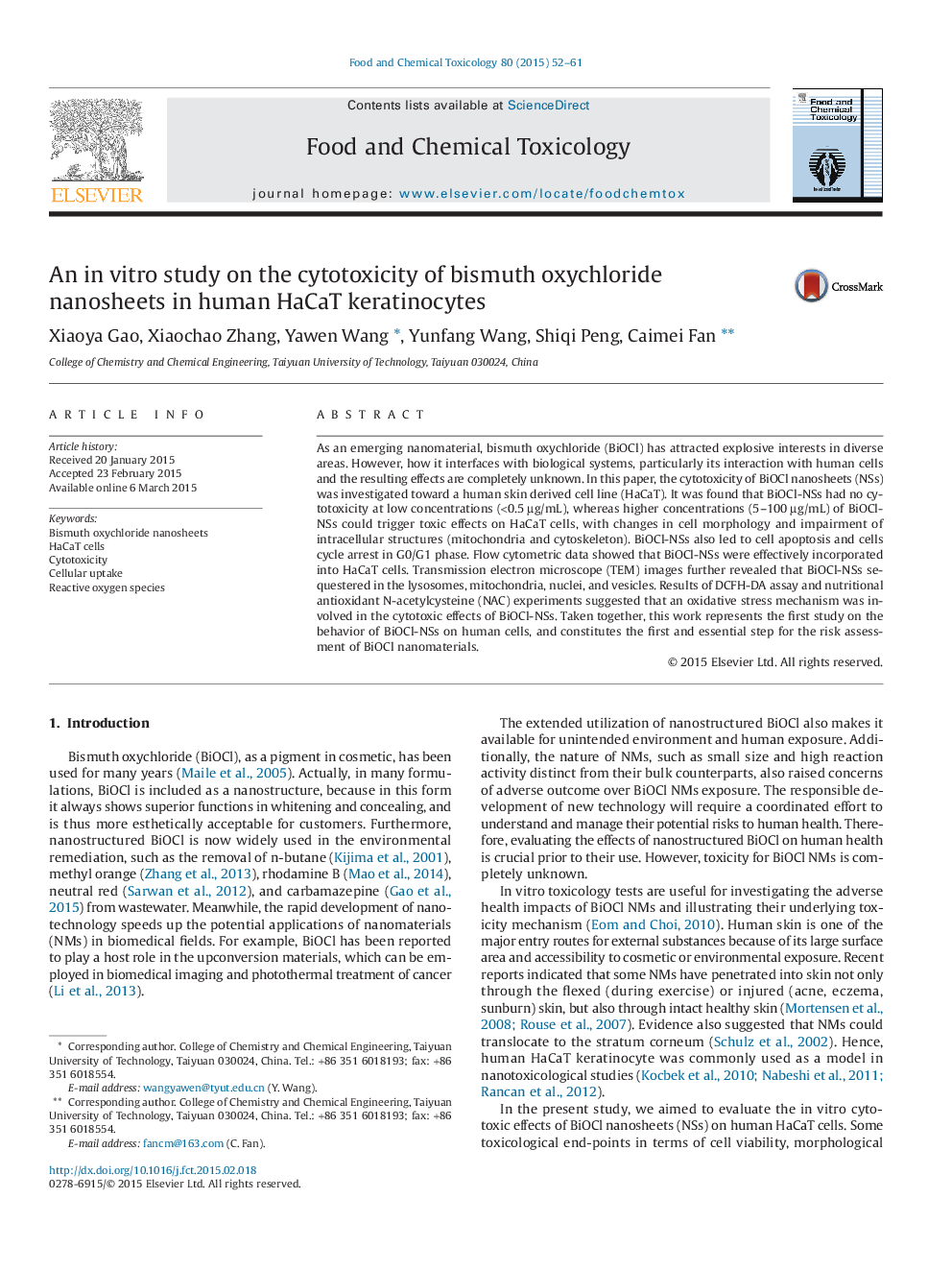| کد مقاله | کد نشریه | سال انتشار | مقاله انگلیسی | نسخه تمام متن |
|---|---|---|---|---|
| 5849796 | 1561764 | 2015 | 10 صفحه PDF | دانلود رایگان |

- This study first examined the cytotoxicity of BiOCl-NSs in human HaCaT cells.
- BiOCl-NSs could be effectively taken up by HaCaT cells.
- High concentrations (5-100âµg/mL) of BiOCl-NSs could provoke cytotoxicity.
- BiOCl-NSs induced apoptosis and cell cycle arrest.
- BiOCl-NSs stimulated intracellular reactive oxygen species (ROS) generation.
As an emerging nanomaterial, bismuth oxychloride (BiOCl) has attracted explosive interests in diverse areas. However, how it interfaces with biological systems, particularly its interaction with human cells and the resulting effects are completely unknown. In this paper, the cytotoxicity of BiOCl nanosheets (NSs) was investigated toward a human skin derived cell line (HaCaT). It was found that BiOCl-NSs had no cytotoxicity at low concentrations (<0.5âµg/mL), whereas higher concentrations (5-100âµg/mL) of BiOCl-NSs could trigger toxic effects on HaCaT cells, with changes in cell morphology and impairment of intracellular structures (mitochondria and cytoskeleton). BiOCl-NSs also led to cell apoptosis and cells cycle arrest in G0/G1 phase. Flow cytometric data showed that BiOCl-NSs were effectively incorporated into HaCaT cells. Transmission electron microscope (TEM) images further revealed that BiOCl-NSs sequestered in the lysosomes, mitochondria, nuclei, and vesicles. Results of DCFH-DA assay and nutritional antioxidant N-acetylcysteine (NAC) experiments suggested that an oxidative stress mechanism was involved in the cytotoxic effects of BiOCl-NSs. Taken together, this work represents the first study on the behavior of BiOCl-NSs on human cells, and constitutes the first and essential step for the risk assessment of BiOCl nanomaterials.
Graphical Abstract
Journal: Food and Chemical Toxicology - Volume 80, June 2015, Pages 52-61